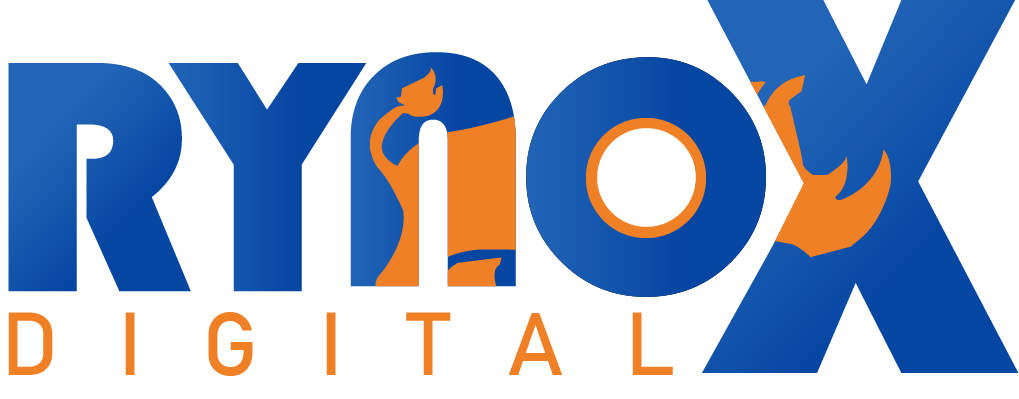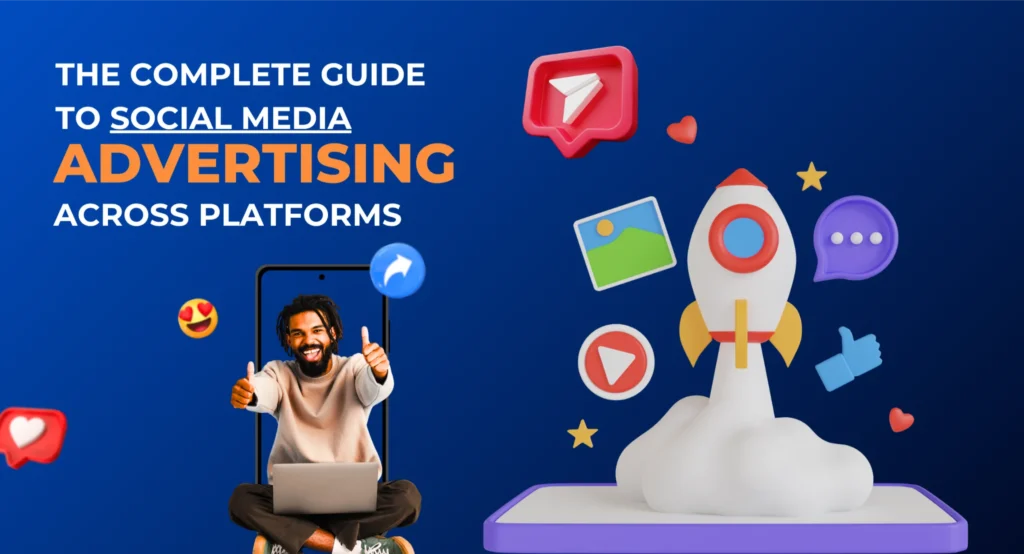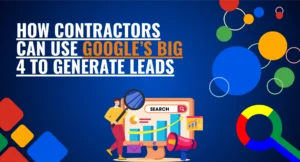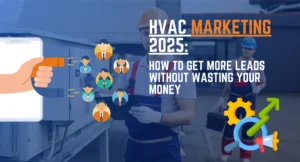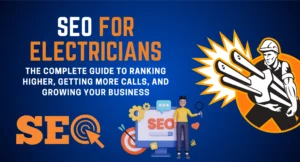Introduction: Why Social Media Advertising Matters in 2025
What Is Social Media Advertising?
Social media advertising is the practice of running paid campaigns on platforms like Facebook, Instagram, LinkedIn, TikTok, and YouTube to reach specific audiences. Unlike traditional marketing channels, where you broadcast messages to broad groups, social media platforms allow businesses to target ads with incredible precision. From demographics like age and location to behaviors such as homeownership or interest in remodeling, social media advertising gives you the ability to reach the right person at the right time.
For contractors, construction companies, and service-based businesses, this means you no longer need to rely solely on word-of-mouth or expensive print ads. With social media advertising, you can showcase projects, attract homeowners, and generate qualified leads directly through platforms your audience already uses daily.
Why Social Media Advertising Is More Relevant Than Ever
In 2025, the digital landscape is crowded. Organic reach on platforms like Facebook has dropped significantly, making paid ads the most effective way to stay visible. Consider these trends:
- Over 4.7 billion people now use social media worldwide.
- 90% of users follow at least one brand or business.
- Businesses using social media advertising consistently report higher lead generation than those relying only on organic posts.
For contractors and construction businesses, this shift is even more important. Homeowners no longer just search Google for a service — they browse Instagram for project inspiration, check Facebook for local contractors, and watch YouTube videos to learn about renovations. If you’re not advertising on these platforms, you’re invisible during key decision-making moments.
How Social Media Advertising Fits Into the Customer Journey
Think of social media advertising as the bridge between awareness and conversion. While your website may serve as the hub of your digital presence, ads on social platforms bring new prospects into your funnel. For example:
- A roofing company runs Facebook ads targeting homeowners within a 25-mile radius.
- A remodeling contractor promotes Instagram carousel ads showcasing before-and-after kitchens.
- A commercial construction firm uses LinkedIn ads to connect with property developers.
Each of these campaigns introduces your brand, builds trust, and directs prospects toward your website or landing page. Without social media advertising, those potential clients might never find you.
Benefits of Social Media Advertising for Contractors and Service Businesses
- Precise Local Targeting: Reach only the neighborhoods and zip codes you serve.
- Showcasing Work Visually: Share before-and-after project images that capture attention.
- Cost-Effective Leads: Compared to traditional channels like print or billboards, social media advertising delivers measurable ROI.
- Quick Adjustments: You can pause, edit, or scale campaigns instantly — unlike locked-in traditional ads.
- Retargeting Potential: Stay top-of-mind by showing ads to people who visited your site but didn’t convert.
Why This Guide Exists
Too many businesses waste money on random boosted posts or poorly targeted campaigns. The goal of this blog is to give you a complete roadmap to social media advertising across platforms — showing you how to choose the right channels, create effective ads, budget wisely, and measure results.
By the end, you’ll know exactly how to:
- Pick the right platform for your industry.
- Craft ads that stop the scroll and drive clicks.
- Track ROI so you know which campaigns bring real leads.
- Avoid common mistakes that drain budgets.
Whether you’re a contractor looking to get more local leads or a service business aiming to scale, this guide will show you how to leverage social media advertising to grow smarter and faster in 2025.
Understanding the Core Benefits of Social Media Advertising
Why Businesses Invest in Social Media Advertising
In today’s fast-moving digital landscape, social media advertising has become a cornerstone of growth for businesses of all sizes. Unlike traditional channels like print ads, radio, or billboards, social media platforms provide real-time targeting, measurable results, and flexibility that no other medium can match.
For contractors, construction businesses, and service providers, this matters even more. Every lead is high-value, and every project could be worth thousands of dollars. That means you can’t afford to waste marketing dollars on vague strategies. With social media advertising, you know exactly who you’re reaching, how much you’re spending, and what return you’re getting.
Core Benefits of Social Media Advertising
1. Laser-Targeted Reach
One of the biggest advantages of social media advertising is the ability to target precisely. Instead of casting a wide net, you can focus on people who are most likely to need your services.
- Demographics: Age, gender, income level, and homeowner status.
- Geographics: Zip codes, neighborhoods, or radius around your service area.
- Interests and Behaviors: Home improvement, DIY enthusiasts, or real estate investors.
For example, a roofing contractor can target homeowners within a 20-mile radius who recently searched for storm damage repairs. This level of precision ensures that every ad dollar goes toward reaching someone who could realistically become a client.
2. Cost-Effective Campaigns
Traditional advertising often comes with high upfront costs and limited measurability. A billboard might cost thousands but provide no clear data on how many leads it generated. In contrast, social media advertising can start with as little as $10 a day, and you can adjust budgets in real time.
Better yet, you can track cost per click (CPC), cost per lead (CPL), and overall return on ad spend (ROAS). This transparency makes it easier to scale what works and stop wasting money on what doesn’t.
3. Visual Storytelling
Construction and service businesses thrive on visuals. A before-and-after remodeling project, a video walkthrough of a newly built deck, or a testimonial clip from a satisfied client tells a story more powerfully than words alone.
Platforms like Instagram, TikTok, and YouTube make it easy to showcase this work directly to potential customers. Through social media advertising, you can highlight your craftsmanship, demonstrate your expertise, and inspire prospects to imagine working with you.
4. Faster Brand Recognition
The more prospects see your name and work, the more familiar you become. Familiarity builds trust, and trust leads to action. Social media advertising allows you to stay top-of-mind with your audience by consistently showing up in their feeds, even if they don’t click the first time.
Retargeting campaigns amplify this effect, reminding people who visited your website or engaged with your content to come back and take the next step.
5. Flexibility and Control
Another benefit of social media advertising is flexibility. Unlike traditional ads, where you’re locked into a contract, social platforms allow you to:
- Pause underperforming campaigns instantly.
- Test multiple ad variations (images, headlines, CTAs).
- Scale budgets on winning campaigns.
This level of control ensures you’re always optimizing for the best results.
Example: Benefits in Action for a Contractor
A local remodeling company invests $500 in Facebook ads showcasing before-and-after kitchen renovations. They target homeowners within a 15-mile radius, aged 30–60, with interests in home improvement. Within two weeks, they generate 15 qualified leads.
Compare that to a $500 flyer campaign distributed randomly in the area. The flyers may land in apartments or homes outside the target demographic, generating minimal return. This is why social media advertising is considered one of the most efficient marketing investments for contractors.
The Bottom Line
The benefits of social media advertising go far beyond visibility. From precise targeting and cost-effectiveness to storytelling and retargeting, it gives businesses the tools to connect with the right people at the right time. For contractors and service providers, this isn’t just a nice-to-have — it’s the most powerful way to generate consistent, high-quality leads in 2025 and beyond.
Platform Breakdown: Choosing the Right Channel
Why Platform Choice Matters
Not all platforms are created equal. Each one has its strengths, audience demographics, and ad formats. To get the most out of social media advertising, businesses need to focus on the platforms where their ideal customers spend time. For contractors and service-based businesses, this decision can make the difference between generating steady leads and wasting ad spend.
Facebook Ads: Local Targeting and Lead Generation
Facebook remains one of the most powerful tools for social media advertising because of its reach and advanced targeting. With over 2.9 billion monthly active users, chances are your ideal clients are there.
Why it works for contractors:
- Hyper-local targeting (zip codes, neighborhoods, or specific service areas).
- Lead form ads that allow prospects to request quotes without leaving Facebook.
- Retargeting campaigns that bring back visitors who interacted with your website.
Example: A roofing company runs a Facebook campaign targeting homeowners within 20 miles who recently searched for storm damage repair. Within days, they start receiving quote requests directly through Facebook’s lead form ads.
Instagram Advertising: Visual Storytelling That Inspires
As a visually-driven platform, Instagram is perfect for showcasing before-and-after photos, project highlights, and short video reels. Since it’s owned by Meta, Instagram shares the same powerful targeting features as Facebook, making it an excellent companion channel.
Why it works for contractors:
- High engagement with visual content.
- Carousel ads to showcase multiple project stages.
- Story ads that appear between users’ daily content for maximum visibility.
Example: A remodeling contractor shares a carousel ad featuring three stunning kitchen transformations. Each swipe builds credibility, leading to direct inquiries through Instagram DMs.
LinkedIn Ads: B2B and Commercial Leads
LinkedIn isn’t just for job seekers — it’s a growing hub for B2B advertising. For contractors targeting commercial construction, property managers, or developers, LinkedIn can be an untapped goldmine.
Why it works for contractors:
- Precise professional targeting (job title, industry, company size).
- Sponsored content ads to promote services like commercial remodeling or facility upgrades.
- Direct outreach through LinkedIn InMail ads.
Example: A commercial contractor runs LinkedIn ads targeting property managers in their city. The campaign results in several consultation requests for office renovation projects.
TikTok Ads: Short-Form Engagement With a Younger Audience
TikTok has exploded in popularity, especially with younger audiences and homeowners interested in DIY projects. While some contractors overlook TikTok, it’s becoming a valuable space for creative, attention-grabbing social media advertising.
Why it works for contractors:
- Viral potential with creative, short-form videos.
- Cost-effective ads compared to older platforms.
- Ability to reach younger homeowners beginning to invest in properties.
Example: A painting contractor posts a time-lapse of a house exterior transformation. The video, promoted as a TikTok ad, reaches thousands of viewers and sparks multiple inquiries.
YouTube Advertising: Education and Authority Building
YouTube is the world’s second-largest search engine, making it a prime spot for social media advertising. Video ads allow contractors to educate, inspire, and showcase expertise in a way static ads can’t match.
Why it works for contractors:
- Long-form video ads for tutorials or project walkthroughs.
- Short, skippable ads to generate quick brand awareness.
- Targeting based on search queries and viewer interests.
Example: A remodeling company runs YouTube pre-roll ads featuring a 30-second highlight reel of completed projects. Viewers searching for “kitchen renovation ideas” are introduced to the brand before their chosen video plays.
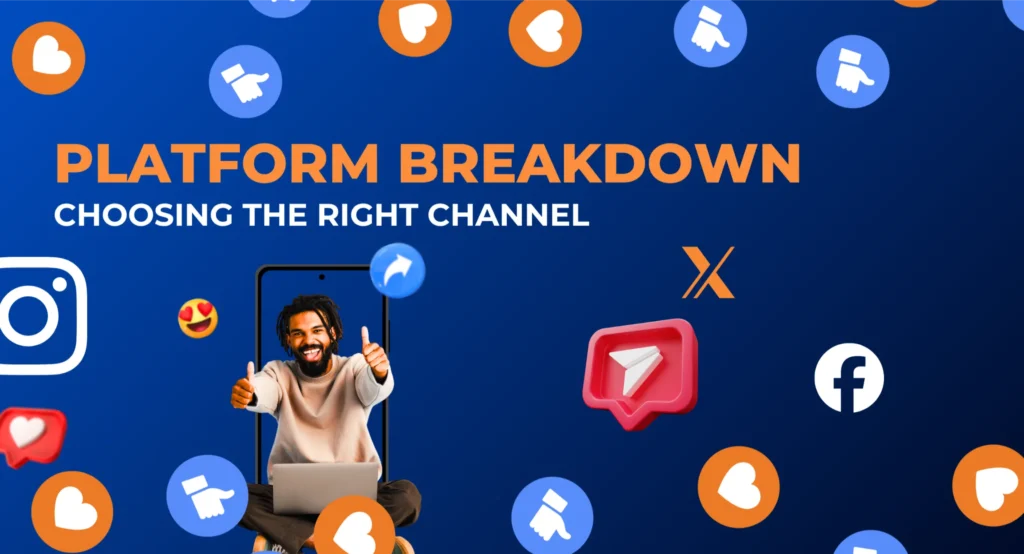
Choosing the Right Mix
The best approach to social media advertising isn’t choosing just one platform — it’s combining them strategically:
- Facebook + Instagram for local homeowners and visual project promotion.
- LinkedIn for commercial opportunities.
- TikTok + YouTube for storytelling and awareness.
By aligning your budget with the platforms your target audience uses most, you maximize ROI while minimizing wasted spend.
The Bottom Line
Every platform has strengths, but not every platform is right for every business. The key is knowing where your prospects spend time and tailoring your campaigns to match. Contractors and service providers who master this balance create social media advertising campaigns that deliver consistent, high-quality leads.
Crafting Winning Social Media Ad Campaigns
Why Strategy Matters in Social Media Advertising
Running ads without a strategy is like building a house without a blueprint — costly, confusing, and ineffective. Successful social media advertising campaigns require clear goals, compelling creatives, and precise targeting. When executed properly, even a modest budget can generate a consistent flow of high-quality leads.
Step 1: Define Your Campaign Goals
Before launching any campaign, ask: What do I want this ad to achieve? Common goals in social media advertising include:
- Brand awareness (introducing your business to new audiences).
- Lead generation (collecting contact details through forms or landing pages).
- Sales or consultations (driving direct inquiries).
For contractors, the most common goal is lead generation — turning clicks into booked consultations or estimate requests.
Step 2: Identify and Target the Right Audience
Targeting is what makes social media advertising so powerful compared to traditional methods. Instead of guessing who sees your message, you can pinpoint your ideal clients.
Best targeting strategies for contractors:
- Geo-targeting: Ads only appear within your service area.
- Demographic targeting: Focus on homeowners within certain income brackets.
- Interest targeting: People who engage with renovation, real estate, or home improvement content.
- Custom audiences: Retarget website visitors or upload past client email lists to reconnect with warm prospects.
Step 3: Design Scroll-Stopping Visuals
In crowded feeds, visuals make the first impression. To succeed in social media advertising, contractors should invest in high-quality project photos and short videos.
- Before-and-after shots: Perfect for remodeling, painting, or landscaping services.
- Time-lapse videos: Showcase an entire project in 15–30 seconds.
- Client testimonial videos: Build instant credibility.
Tip: Always optimize visuals for mobile since over 80% of social media advertising impressions happen on smartphones.
Step 4: Write Copy That Converts
The words in your ad matter just as much as the visuals. Strong ad copy:
- Addresses a problem (“Tired of roof leaks every rainy season?”).
- Provides a solution (“Our expert team fixes and replaces roofs in less than a week.”).
- Adds urgency (“Book your free inspection today — limited spots available.”).
In social media advertising, shorter is often better. A clear headline, concise body text, and a strong call-to-action drive more results than long paragraphs.
Step 5: Use Clear, Compelling Calls-to-Action (CTAs)
Every ad should guide prospects toward the next step. Examples of CTAs that work for contractors include:
- “Request a Free Quote Today.”
- “Schedule Your Consultation Now.”
- “See Our Project Portfolio.”
The more direct the CTA, the higher the chances of converting clicks into leads.
Step 6: Test, Refine, Repeat
One of the biggest advantages of social media advertising is flexibility. You can run multiple variations of the same ad and measure which performs best.
Examples of A/B tests:
- Different headlines.
- Static images vs. video ads.
- Two audience segments (e.g., homeowners vs. property managers).
By refining based on results, contractors avoid wasting ad spend and focus only on what delivers leads.
Example: Crafting a Campaign for a Remodeling Contractor
A remodeling company sets a goal of generating consultation bookings. They run Facebook and Instagram ads targeting homeowners within 20 miles. Their visuals show a dramatic kitchen remodel before-and-after. The ad copy reads: “Upgrade your kitchen in just 6 weeks — book your free consultation today!”
The campaign generates 25 consultation requests in the first month. By testing multiple versions of the headline and visuals, the company improves results while keeping ad costs under control.
The Bottom Line
Crafting a winning social media advertising campaign isn’t about luck — it’s about strategy. From defining goals and targeting the right audience to designing visuals, writing strong copy, and refining through testing, every element matters. Contractors and service providers who master these steps create ads that don’t just get clicks — they get clients.
Budgeting for Social Media Advertising
Why Budgeting Matters in Social Media Advertising
One of the most common mistakes businesses make is either overspending on ads without a plan or underspending so much that campaigns never gain traction. The key to success in social media advertising is finding the sweet spot — investing enough to see meaningful results while controlling costs to protect ROI.
For contractors and service-based businesses, where leads are high-value, even a modest budget can generate significant returns if used wisely.
How Much Should You Spend on Social Media Advertising?
There’s no one-size-fits-all answer, but most experts recommend allocating 5–15% of your overall revenue to marketing, with a portion dedicated specifically to social media advertising.
For example:
- A small contractor earning $250,000 annually might spend $12,500 on marketing, with $5,000–$7,000 allocated to ads.
- A mid-sized construction business earning $1M could invest $50,000–$100,000, with $25,000+ set aside for paid social campaigns.
The exact number depends on your goals: brand awareness, lead generation, or aggressive growth.
Setting Campaign Budgets by Objective
Each goal in social media advertising requires different budget allocations:
- Awareness Campaigns
- Lower daily budgets ($10–$20/day).
- Broad targeting to build visibility.
- Works best for branding and staying top-of-mind.
- Lead Generation Campaigns
- Medium budgets ($20–$50/day).
- Focus on local targeting and lead forms.
- Designed to capture emails, phone numbers, or consultation bookings.
- Conversion Campaigns
- Higher daily budgets ($50–$100+/day).
- Target warm audiences (website visitors, past leads).
- Designed to secure booked jobs or contracts.
By matching spend to goals, businesses avoid wasting money and ensure their social media advertising budget delivers maximum ROI.
Tracking Cost per Lead (CPL)
The most important budgeting metric in social media advertising is cost per lead (CPL). This tells you exactly how much you’re paying to generate a new inquiry.
- Example: A $500 Facebook campaign generates 25 leads. Your CPL = $20.
- If even 2 of those leads convert into $5,000 projects, the ROI is massive.
By monitoring CPL, contractors can scale campaigns that deliver affordable leads and cut those that don’t.
Avoiding Wasted Ad Spend
Budgeting isn’t just about how much you spend — it’s about how you spend it. Common mistakes include:
- Boosting random posts without strategy.
- Targeting too broadly, which dilutes results.
- Running campaigns without tracking conversions.
To avoid these pitfalls, always tie your budget to measurable goals and use proper tracking tools like Facebook Pixel or Google Analytics.
Example: Budgeting for a Painting Contractor
A painting contractor sets a goal of generating 40 leads per month. They allocate $1,200 to social media advertising, running Facebook and Instagram lead form ads at $40/day. The campaign averages $25 per lead, generating 48 inquiries. Out of those, 10 become jobs averaging $2,000 each — a $20,000 return from a $1,200 spend.
This demonstrates how even a modest budget, when managed strategically, can produce powerful results.
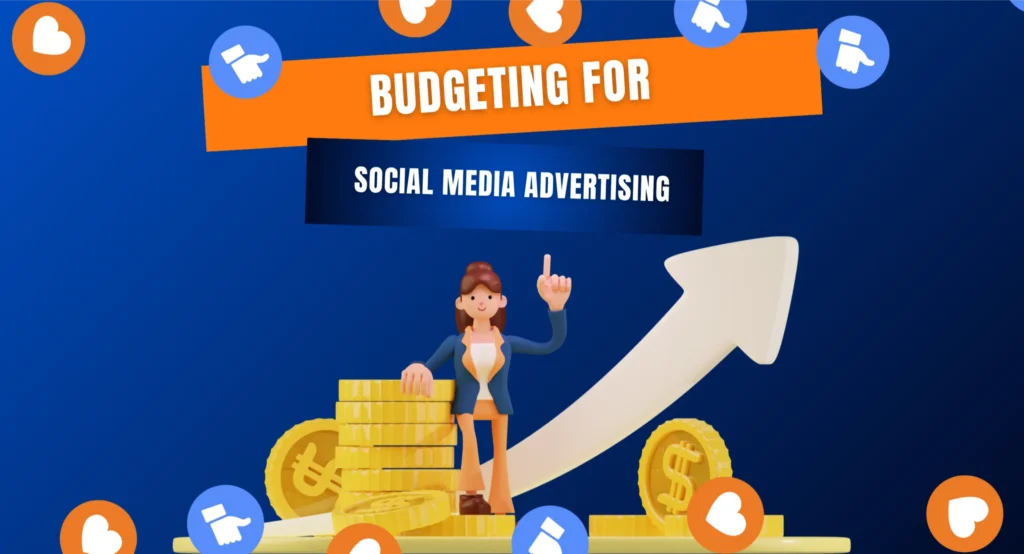
Scaling Budgets for Growth
Once you find a winning campaign, don’t be afraid to scale. Increase budgets gradually (10–20% per week) to avoid disrupting ad performance. This allows you to maximize leads while maintaining a healthy cost per lead.
The Bottom Line
Budgeting for social media advertising isn’t about spending the most — it’s about spending smart. By setting clear objectives, tracking cost per lead, and scaling what works, contractors and service providers can generate consistent leads and maximize ROI. Done right, every dollar invested in social media advertising becomes a step toward steady business growth.
Tracking and Measuring ROI
Why Measuring ROI Is Essential in Social Media Advertising
Throwing money at ads without tracking results is one of the fastest ways to waste your marketing budget. The true power of social media advertising lies in its measurability. Unlike a billboard or print ad, you can see exactly how many people viewed your ad, clicked it, and converted into leads. For contractors and service businesses, this means every dollar can be tied to a measurable return.
Key Metrics to Track
- Impressions and Reach
- Impressions = total number of times your ad was shown.
- Reach = unique users who saw your ad.
- These metrics are important for awareness campaigns, showing how visible your brand is becoming.
- Click-Through Rate (CTR)
- The percentage of people who clicked your ad after seeing it.
- A low CTR may indicate weak visuals, irrelevant targeting, or poor ad copy.
- Cost per Click (CPC)
- How much you pay for each click.
- Helps evaluate if you’re paying too much to drive traffic.
- Cost per Lead (CPL)
- One of the most important metrics in social media advertising.
- Example: $500 in ad spend produces 25 leads = $20 per lead.
- This allows you to calculate ROI against the revenue from converted jobs.
- Conversion Rate
- The percentage of leads who turn into paying clients.
- Even if you have a low CPL, poor conversion rates may signal issues with follow-ups or landing pages.
- Return on Ad Spend (ROAS)
- The ultimate measure of profitability.
- Example: $1,000 in ads generates $10,000 in contracts = 10X ROAS.
Tools for Tracking Ad Performance
- Facebook Ads Manager: Built-in analytics for impressions, CTR, CPC, and conversions.
- Google Analytics: Tracks website traffic, conversions, and multi-channel attribution.
- CRM Systems (HubSpot, GoHighLevel, Zoho): Tie leads from social media advertising to actual sales outcomes.
- UTM Tracking Links: Add to ads for detailed campaign performance breakdowns.
For contractors, even a simple CRM integrated with Facebook or Google can show exactly which campaigns are bringing in the most valuable leads.
Why Leads Matter More Than Vanity Metrics
It’s easy to get excited about likes, comments, or shares — but these are “vanity metrics.” While they show engagement, they don’t necessarily mean new business. For construction and service companies, the real measure of social media advertising success is leads and revenue.
- Vanity Metric Example: 1,000 likes on a project post.
- Business Metric Example: 10 leads that turn into $20,000 worth of projects.
Always prioritize metrics that impact your bottom line.
Example: Tracking ROI for a Contractor
A landscaping company invests $1,500 in social media advertising campaigns across Facebook and Instagram.
- Results: 60 leads at $25 per lead.
- Conversion rate: 25% (15 booked jobs).
- Average job value: $2,000.
That equals $30,000 in revenue from $1,500 in spend — a 20X return on ad spend (ROAS). Without tracking CPL and ROAS, the company would have no proof their ads worked. With proper tracking, they can confidently scale budgets.
Common Tracking Mistakes to Avoid
- Not setting up conversion tracking pixels.
- Measuring success only by likes or impressions.
- Ignoring call tracking for phone inquiries.
- Failing to connect ad results with actual closed deals.
By avoiding these mistakes, businesses ensure that social media advertising delivers real, measurable ROI.
The Bottom Line
Tracking and measuring ROI is what makes social media advertising smarter than traditional marketing. By focusing on meaningful metrics like cost per lead, conversion rate, and return on ad spend, contractors and service providers can prove the value of every campaign. With the right tools in place, ads aren’t just an expense — they become an investment that fuels predictable growth.
Advanced Strategies for Growth
Why Advanced Strategies Matter
Once you’ve mastered the basics of social media advertising, the next step is scaling your results. Running simple awareness or lead-gen ads can get you started, but advanced strategies like retargeting, lookalike audiences, and cross-platform campaigns are what separate average results from explosive growth. For contractors and service businesses, these strategies turn one-time campaigns into systems that consistently generate high-quality leads.
Retargeting: Staying Top-of-Mind
Not every prospect converts on their first interaction. In fact, most people need multiple touchpoints before making a decision. Retargeting in social media advertising allows you to reconnect with users who:
- Visited your website but didn’t fill out a form.
- Clicked on your ad but didn’t book a consultation.
- Watched part of your video but didn’t engage further.
How it works:
- A remodeling company runs a Facebook ad to drive traffic to their kitchen renovation page.
- Many visitors browse but leave without booking.
- Retargeting ads show them testimonials and a “Schedule Your Free Consultation” CTA.
- Familiarity builds trust, and many return to convert.
Retargeting ensures you don’t lose valuable leads who were interested but not ready the first time.
Lookalike Audiences: Expanding to Similar Prospects
Another powerful feature of social media advertising is the ability to build lookalike audiences. These audiences are created by platforms like Facebook and Instagram based on the traits of your existing clients.
Example:
- You upload a list of past clients who booked $10,000+ projects.
- Facebook analyzes their demographics, behaviors, and interests.
- A new “lookalike audience” is created with people who share similar traits.
- Your ads now reach potential clients who are statistically more likely to convert.
For contractors, this means turning past successes into a formula for attracting new high-value clients.
Cross-Platform Campaigns: Meeting Prospects Everywhere
Different people use different platforms, and many use more than one. By running social media advertising across multiple channels, you create consistent visibility and brand reinforcement.
- Facebook + Instagram: Great for visual project showcases and local targeting.
- LinkedIn: Ideal for B2B and commercial construction opportunities.
- YouTube + TikTok: Perfect for storytelling and educational content.
A homeowner might see your project ad on Instagram, then later encounter a testimonial video on YouTube. By the time they’re ready to hire, your brand is top-of-mind.
Scaling Campaigns for Maximum ROI
Once you identify winning campaigns, scaling is the logical next step. But scaling in social media advertising should be done strategically:
- Increase budgets gradually: Boost spend by 10–20% at a time to avoid disrupting performance.
- Expand targeting: Move from narrow local audiences to broader areas once you dominate your service zone.
- Add new ad formats: If images worked well, test video ads or carousel ads for higher engagement.
Scaling isn’t just about spending more — it’s about spending smarter to multiply results.
Example: Advanced Growth for a Contractor
A roofing company starts with $1,000 in Facebook ads generating 40 leads. By using retargeting ads, they convert an additional 10% of website visitors who originally left. Next, they create a lookalike audience based on their best clients, doubling their lead volume. Finally, they expand to YouTube, running short testimonial ads. Within 6 months, their monthly leads triple while maintaining a low cost per lead.
This demonstrates how advanced social media advertising strategies can unlock scalable growth.
The Bottom Line
Basic ads get your business noticed, but advanced strategies make your campaigns unstoppable. Retargeting ensures no lead is left behind. Lookalike audiences expand your reach to qualified prospects. Cross-platform campaigns maximize visibility across the digital landscape. By combining these advanced tactics, contractors and service providers can take their social media advertising from functional to highly profitable.
Common Mistakes to Avoid in Social Media Advertising
Why Avoiding Mistakes Matters
Social media advertising can deliver incredible ROI, but it can also drain budgets quickly if campaigns are poorly executed. Many businesses, especially contractors and service providers, jump into paid ads without strategy and then conclude that “ads don’t work.” In reality, it’s not the platform that fails — it’s the mistakes in execution. By identifying and avoiding common pitfalls, you can ensure that your ad spend consistently generates leads and revenue.
Mistake 1: Boosting Random Posts
One of the most common errors in social media advertising is hitting the “Boost Post” button on Facebook or Instagram. While boosting increases reach, it lacks the precision of Ads Manager campaigns. Boosted posts usually target broad audiences without proper segmentation, leading to poor-quality clicks that rarely convert.
The Fix: Use Ads Manager to create campaigns with specific objectives like “Lead Generation” or “Conversions.” This way, your budget focuses on results, not just impressions.
Mistake 2: Targeting Too Broadly
Casting a wide net might sound appealing, but in social media advertising, broad targeting often wastes money. For contractors, running ads to “everyone in the U.S.” is useless if you only serve a 25-mile radius.
The Fix: Narrow your audience by location, homeowner status, age, and interests. Hyper-local targeting ensures your ads reach people who can realistically hire you.
Mistake 3: Ignoring Creative Quality
Low-quality images, generic stock photos, or dull ad copy fail to capture attention. In visually-driven platforms like Instagram and Facebook, poor creative is the fastest way to kill performance.
The Fix: Invest in high-quality project photos, video testimonials, or time-lapse videos. Pair them with clear, benefit-driven ad copy that speaks directly to your client’s needs.
Mistake 4: No Clear Call-to-Action (CTA)
Ads without clear direction leave prospects confused. Simply showcasing a project without telling viewers what to do next results in wasted impressions.
The Fix: Always include strong CTAs like “Request a Free Quote Today” or “Schedule Your Consultation Now.” Directing the next step improves conversions dramatically.
Mistake 5: Failing to Track Conversions
Many businesses measure success by likes, shares, or reach. While these “vanity metrics” may feel good, they don’t pay the bills. Without conversion tracking, you can’t know if ads are actually generating leads.
The Fix: Set up tracking pixels, connect ads to Google Analytics, and monitor cost per lead (CPL) and return on ad spend (ROAS).
Mistake 6: Giving Up Too Early
Another common problem in social media advertising is pulling the plug too soon. Ads often need time to optimize. If you shut campaigns down after just a few days, you may miss the learning phase where platforms refine targeting.
The Fix: Allow campaigns at least 7–14 days to collect enough data before making major changes. Then, test different creatives, headlines, and audiences systematically.
Mistake 7: Ignoring Retargeting
Not all prospects convert on their first visit. Without retargeting, you lose warm leads who were already interested.
The Fix: Always run retargeting ads for website visitors, landing page clicks, or video viewers. This keeps your brand in front of prospects until they’re ready to buy.
Example: A Costly Mistake for a Contractor
A local home renovation company spent $2,000 boosting posts of finished projects. The ads reached thousands of people, but few were homeowners in the service area. After refining with targeted campaigns in Ads Manager — and adding strong CTAs and retargeting — their next $2,000 investment generated 35 qualified leads. The difference wasn’t the platform — it was avoiding mistakes.
The Bottom Line
Mistakes in social media advertising aren’t just frustrating — they’re expensive. By avoiding errors like boosting random posts, targeting too broadly, neglecting creative quality, and failing to track conversions, contractors and service providers can maximize ad spend and generate consistent leads. The key is running ads with strategy, patience, and constant optimization.
Conclusion: Mastering Social Media Advertising for Growth
Why Social Media Advertising Is Non-Negotiable
In today’s digital-first world, businesses that ignore social media advertising are missing out on one of the most powerful growth tools available. Whether you’re a contractor, a remodeling company, or a service-based business, your ideal clients are already scrolling through Facebook, Instagram, TikTok, LinkedIn, and YouTube every single day. Without ads on those platforms, your brand remains invisible during critical decision-making moments.
The truth is, social media advertising is no longer optional. It’s the most effective way to generate leads, increase visibility, and build brand trust in 2025 and beyond.
Recap: The Roadmap to Success
Throughout this guide, we’ve explored how to build and optimize effective campaigns:
- Understanding the benefits of social media advertising (precision targeting, cost-effectiveness, visual storytelling).
- Choosing the right platforms — Facebook, Instagram, LinkedIn, TikTok, and YouTube.
- Crafting winning campaigns with strong visuals, copy, and CTAs.
- Budgeting smartly to control ad spend while maximizing ROI.
- Tracking performance with metrics like cost per lead and return on ad spend.
- Using advanced strategies like retargeting and lookalike audiences.
- Avoiding common mistakes that waste money.
Each piece of this puzzle matters. When combined, they create social media advertising campaigns that don’t just look good — they deliver measurable results.
Why This Matters for Contractors and Service Providers
For contractors, every lead is high-value. A single job can generate thousands in revenue. That’s why social media advertising is so powerful: it allows you to target only the people most likely to hire you — homeowners, property managers, or business owners in your service area. Instead of wasting money on broad, untargeted ads, you invest in campaigns that consistently bring in qualified leads.
Imagine spending $1,000 and generating $20,000 in booked projects. That’s not marketing spend — that’s marketing investment.
The Path Forward
The question isn’t whether social media advertising works — it’s whether you’ll take the right approach. Businesses that jump in without strategy often waste money. But those that plan carefully, track results, and optimize continuously build a system that works 24/7 to generate leads and grow revenue.
If you’re ready to stop guessing and start scaling, now is the time to invest in smarter campaigns.
Partner with Rynox Digital — turn social media advertising into real leads.
